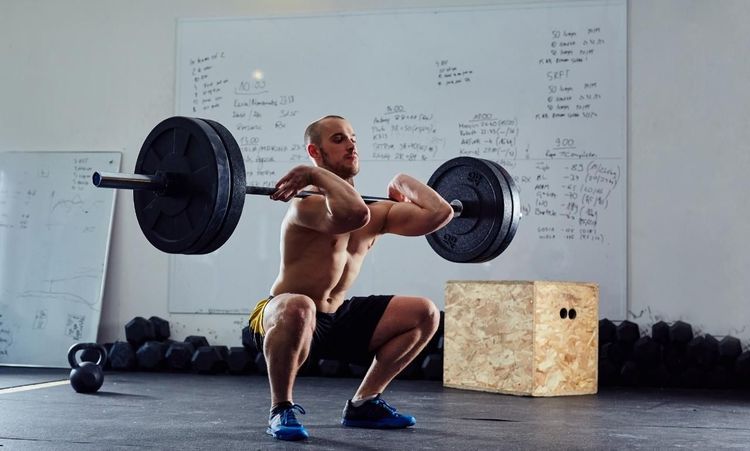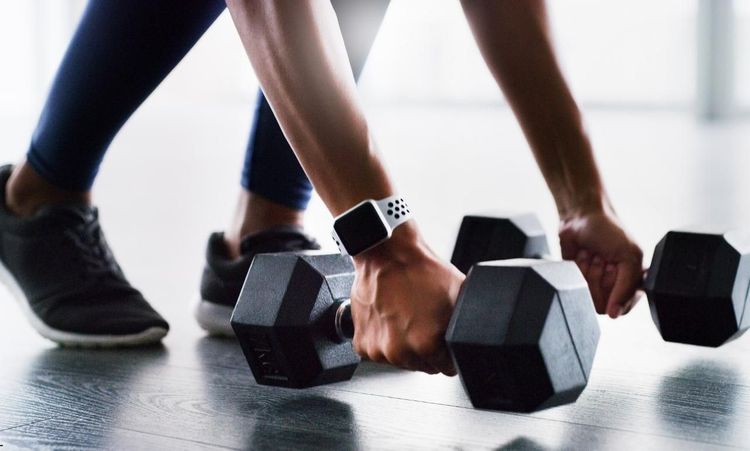Let’s face it—leg day gets repetitive. You squat, lunge, maybe hop on the leg press. But your muscles? They adapt fast.
To build strength, size, and functional mobility, you need variety. That doesn’t mean abandoning the barbell. It means getting smarter with it.
Barbell squats are king—but even kings have many crowns. Each variation targets different muscle groups, demands unique control, and helps expose your weaknesses.
Want better glute activation? Need to fix your squat depth? Looking for new ways to challenge balance or build single-leg strength?
This list is your toolbox. Below, you'll find 10 barbell squat variations that can refresh your routine, boost performance, and help you avoid plateaus.
Let’s explore the options.
Spanish Squat
This squat isn’t about geography—it’s about tension. The Spanish squat uses a resistance band wrapped behind the knees. The barbell rests in front, like a front squat.
Why this works: it forces you to sit upright and shift weight toward your heels. That fires up the quads like crazy without overloading the knees.
The movement is surprisingly difficult even with just your body weight. Add a barbell, and it becomes a quad-scorching, posture-correcting masterclass.
Athletes recovering from knee issues love this move. But it's also useful for people who struggle to feel their quads in regular squats.
Forward-Facing Wall Squat
This one’s part mobility test, part humbling strength move. Stand facing a wall with your toes a few inches away. Hold a barbell in front-rack position or use a safety squat bar.
Now squat. Don't lean forward. Don’t let your face hit the wall. It sounds simple—until you try it.
This variation challenges ankle mobility, core control, and upright posture. It’s not about loading up plates. It’s about mastering mechanics.
Perfect for lifters who cave forward in front squats or struggle with depth due to tight hips or ankles.
Banded Goblet Squat
Yes, we’re still using a barbell—but we’re adding a twist.
Set up with a barbell in goblet position (cradled vertically in front of the chest). Anchor a resistance band under your feet and around the bar.
The result? Continuous tension from the bottom of the squat to the top. Unlike a bar on your back, this forces your upper body to stay upright and engaged.
It's great for reinforcing proper squat posture and strengthening the mid-back. The added resistance from the band keeps the core guessing.
This variation blends the benefits of a front squat and a resistance exercise in one efficient move.
Kang Squat
Named after Korean weightlifting coach Shin-Ho Kang, this movement fuses a good morning and a back squat into one fluid motion.
You begin like a good morning—hinging at the hips with a bar on your back. Once your torso is nearly parallel to the floor, you drop into a squat.
Then reverse: stand up from the squat, then return to the starting position by extending your hips.
Why is this effective? It emphasizes the hip hinge and squat pattern in one move. That means better posterior chain engagement—glutes, hamstrings, and spinal erectors all fire.
Kang squats also teach control and stability under load. But be warned: this is not for beginners. Respect the bar.
Bulgarian Split Squat
Unilateral strength is non-negotiable. The Bulgarian split squat is brutal—but brutally effective.
Stand in a split stance with your back foot elevated on a bench. Hold a barbell across your back and squat down, keeping your front knee over your ankle.
This move builds strength in each leg independently. That means less imbalance, more coordination, and fewer weak links.
Your glutes, quads, and core all get a workout. It also demands serious balance, which helps improve joint stability and athletic performance.
Want to feel like your legs are made of jelly? Add this to your next session.
Smith Machine Narrow-Stance Squat
Some people knock the Smith machine. But when used intentionally, it can be a game changer.
In this variation, set your feet hip-width apart and slightly in front of you. Lower slowly, keeping tension in the quads.
This narrow stance lights up the quads and removes much of the stability requirement, allowing you to focus purely on contraction.
It’s ideal if you’re nursing an injury or want to isolate your quads without worrying about balance. Just don’t use it as a crutch forever.
Use it to overload smartly and return stronger to free barbell movements.
Belt Squat
Hate the spinal pressure of heavy back squats? The belt squat is your friend.
You attach a weight belt around your waist, connect it to plates or a cable, and squat.
Because the load is distributed through the hips, your spine stays neutral. Your lower body still gets all the love—especially the glutes and quads.
This is a solid option for athletes returning from back injuries or anyone needing volume without compressing the spine.
If your gym has a belt squat machine, use it. If not, a landmine attachment and dip belt can work too.
One and One-Half Squat
Here’s how it works: squat all the way down, rise halfway up, drop back down, then return to standing. That’s one rep.
It sounds innocent. But by pausing mid-rep, you increase time under tension. This builds muscular endurance, joint control, and brutal quad strength.
Use a moderate barbell load. The focus is on the burn, not max weight.
It’s especially effective near the end of a leg workout when you think you’ve got nothing left.
Spoiler: You do. And this squat will find it.
Reverse Band Eccentric Squat
Ready to feel like a superhero—and then realize you’re not?
Attach heavy resistance bands from the top of a squat rack to the barbell. As you lower, the bands help slightly. But as you ascend, they stop assisting.
This overloads the eccentric (lowering) phase, which is where most muscle damage (and growth) happens.
It also teaches control under heavier loads and forces your body to stay tight throughout the movement.
Lifters training for strength will love this. It mimics competition conditions without frying your nervous system every session.
Conclusion
There’s no one-size-fits-all squat.
Each barbell variation in this list offers something unique—whether it's improving your mobility, correcting form, or increasing single-leg strength.
Some movements hit your glutes harder. Others teach your core to stay braced. A few may humble you more than you’d like.
But together, they round out your training.
Adding variety doesn’t just prevent boredom—it prevents injury. It exposes weak links and helps develop a more balanced, bulletproof lower body.
These squats aren’t gimmicks. They’re tools. The more tools you have, the more prepared you are to build strength, resilience, and athleticism that lasts.
So next time leg day rolls around, skip the same-old routine. Pick two or three of these barbell squat variations and rotate them weekly.
You’ll activate more muscle groups, break plateaus, and see growth in places you didn’t before. It’s not about doing more reps—it’s about doing smarter reps.
Your legs—and your gains—will thank you. Stay consistent, stay curious, and keep challenging what your lower body can do.




